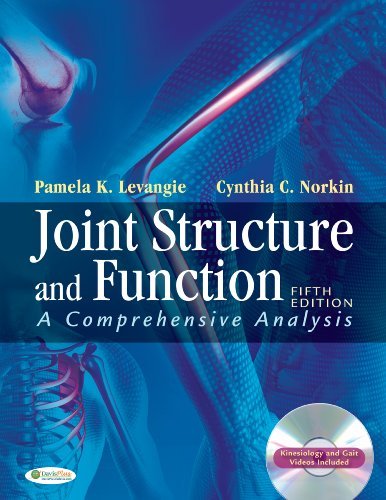Joint Structure Function Comprehensive Analysis 5th Edition Levangie Norkin -Test Bank
Original price was: $55.00.$22.00Current price is: $22.00.
Digital item No Waiting Time Instant Download
ISBN-10: 0803623623 ISBN-13: 978-0803623620
Publisher : F.A. Davis Company; Fifth edition
Authors: Pamela K. Levangie PT DPT DSc FAPTA,
Cynthia C. Norkin PT EdD
Description
Joint Structure Function Comprehensive Analysis 5th Edition Levangie Norkin -Test Bank
Chapter 1: Biomechanical Applications to Joint Structure and Function
Multiple Choice
Identify the choice that best completes the statement or answers the question.
____ 1. When you raise a cup to your mouth, a ____________________ of motion occurs at the elbow joint.
|
a. |
rotation only |
|
b. |
translation only |
|
c. |
translation and rotation |
|
d. |
None of the above answers are correct. |
____ 2. Hip abduction from an anatomic position would occur in which plane?
|
a. |
Sagittal |
|
b. |
Frontal |
|
c. |
Transverse |
|
d. |
Horizontal |
____ 3. Which of the following describes the phenomenon that when two forces come in contact, the second force will respond to the contact by the first force with equal magnitude and in the opposite direction?
|
a. |
Law of Inertia |
|
b. |
Law of Reaction |
|
c. |
Law of Acceleration |
|
d. |
None of the above answers are correct. |
____ 4. A ____________________ class lever is described by the fulcrum occurring at one end, followed by the resistance (load or weight) and then the force (effort).
|
a. |
First |
|
b. |
Second |
|
c. |
Third |
|
d. |
Fourth |
____ 5. In what type of lever is the M Ad always less than one?
|
a. |
First |
|
b. |
Second |
|
c. |
Third |
|
d. |
Fourth |
____ 6. Which of the following best describes torque?
|
a. |
The force a muscle generates |
|
b. |
A force times the perpendicular distance from the line of force to the axis of rotation |
|
c. |
A force times the distance measured along the lever from the line of force to the axis of rotation |
|
d. |
The distance a muscle can move |
Figure 1-7
____ 7. In Figure 1-7, the biceps is acting on the forearm. What is the force of the biceps, FB, given the following: moment arm of the biceps, d = 0.02 m and torque due to the biceps, TM = –5 Nm?
|
a. |
–0.1 N |
|
b. |
1,250 N |
|
c. |
5 N |
|
d. |
–250 N |
____ 8. As your patient abducts her shoulder from 90° to 120°, the moment arm decreases. If the torque from the deltoid remains constant, the force of the deltoid would ____________________ as the shoulder abducted.
|
a. |
remain the same |
|
b. |
increase |
|
c. |
decrease |
|
d. |
become 0 N |
Figure 1-9
____ 9. In Figure 1-9, at which position does the weight have the greatest torque capabilities on the knee joint?
|
a. |
A |
|
b. |
B |
|
c. |
C |
|
d. |
D |
____ 10. In Figure 1-9, at which position does the weight produce the greatest distractive on the knee joint?
a.
A
b.
B
c.
C
d.





Be the first to review “Joint Structure Function Comprehensive Analysis 5th Edition Levangie Norkin -Test Bank”